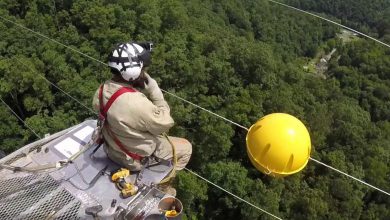These 23 Weapons are Banned in Warfare (23 Photos)
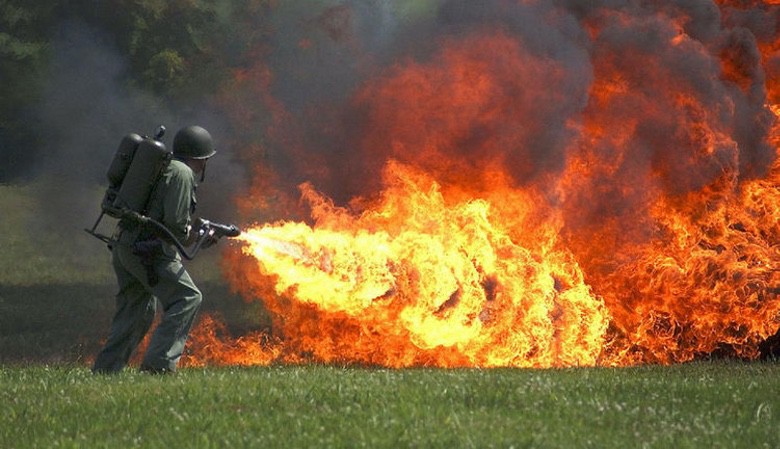
There are two basic ways to look at banning weapons in war. The first, humanitarian view is that that war should be as “humane” as possible, limiting death only to intended targets, and delivered as quickly and painlessly as possible. With, of course, the possibility of rescue or recovery. Weapons banned in war inflict undue destruction on civilians.
The second view on illegal war weapons could be called the “Sherman Perspective,” so-named for the Civil War general who said “It is well that war is so terrible – otherwise we would grow too fond of it.” Since the Hague and Geneva conventions, we seem to have grown quite fond of war. The Sherman Argument would have it that putting rules on war turns it into a sport, instead of something to be avoided at all costs.
Mustard Gas
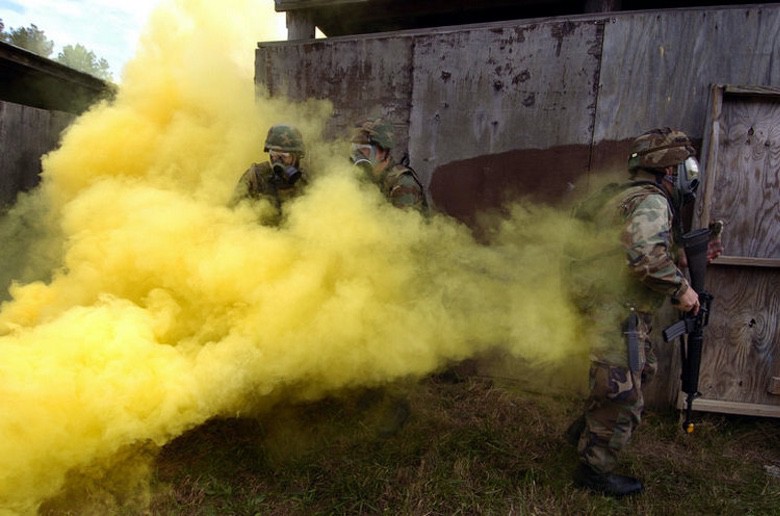
The terror of the trenches in World War I, mustard gas gets its name from its yellow-brown color and its odor, which is apparently similar to horseradish. Because it’s heavier than air, mustard gas proved particularly effective in clearing trenches, and was almost single-handedly responsible for the 1928 Geneva Conventions. When inhaled, the gas causes the lungs to fill with fluid, essentially drowning the victim in their own fluids.
Nerve Gas

Nerve gases of all kinds have been systematically outlawed by both the Hague and Geneva from 1899 all the way up to 1993. All nerve agents (like Sarin, VX, Tabun, and Soman) work in the same basic way: By blocking blocking the enzyme that normally destroys a very important neurotransmitter. Basically, nerve agents cause your entire nervous system to malfunction, like an electrical system full of short circuits. Death generally comes as a result of a shutdown of the respiratory system, but not before painful blisters, boils, and internal hemmorrhaging occur.
Phosgene Gas
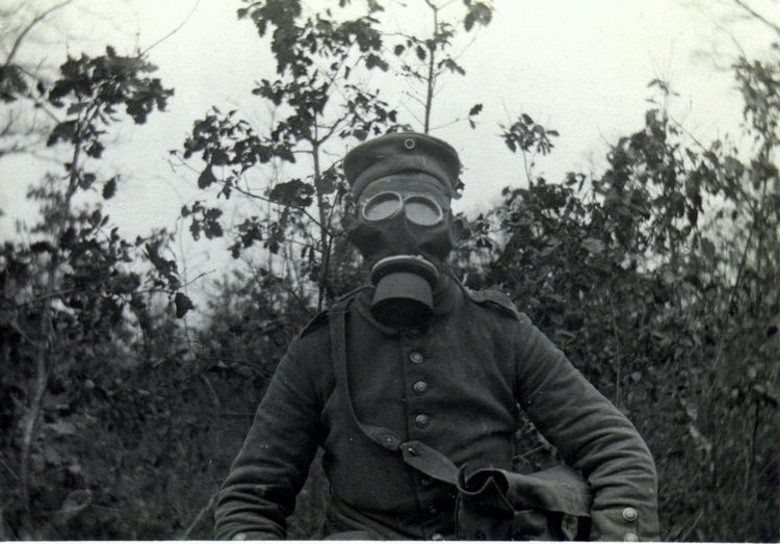
While mustard gas might have gotten all the press, phosgene was actually responsible for about 85% of all chemical weapons deaths in World War I. Simple and cheap to produce in large quantities, phosgene damages the proteins in the lungs, causing them to break down, meaning the lungs stop exchanging oxygen. It’s a particularly insidious gas, since it’s colorless, almost odorless, and symptoms can take a long time to show up. Japan continued to use phosgene well into WWII on at least 375 separate occasions, generally against the Chinese.
Tear Gas
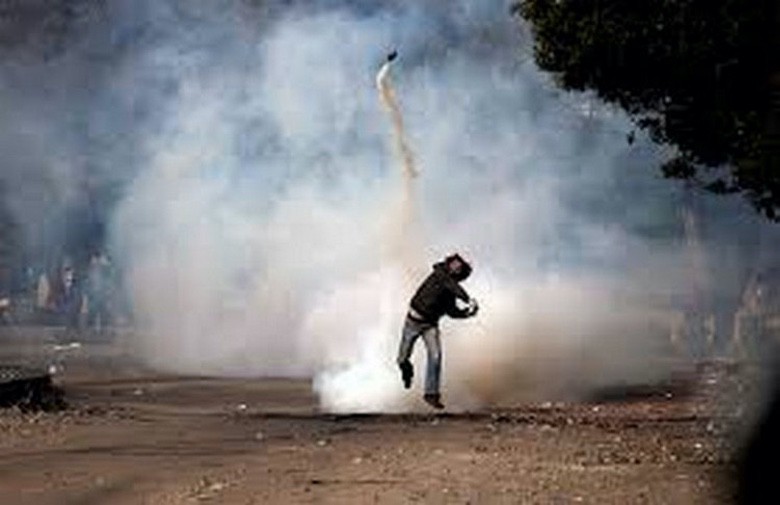
Believe it or not, the tear gas that police routinely shoot into crowds in America is technically outlawed for use in war by the Hague Convention. Even though it’s generally non-lethal, tear gas is still an inhalant chemical weapon that obstructs breathing, that puts it in the same legal class as mustard gas. So: legal to shoot at protesters in Missouri, but not legal to drop on a machine gun nest in Afghanistan. Go figure.
Pepper Spray
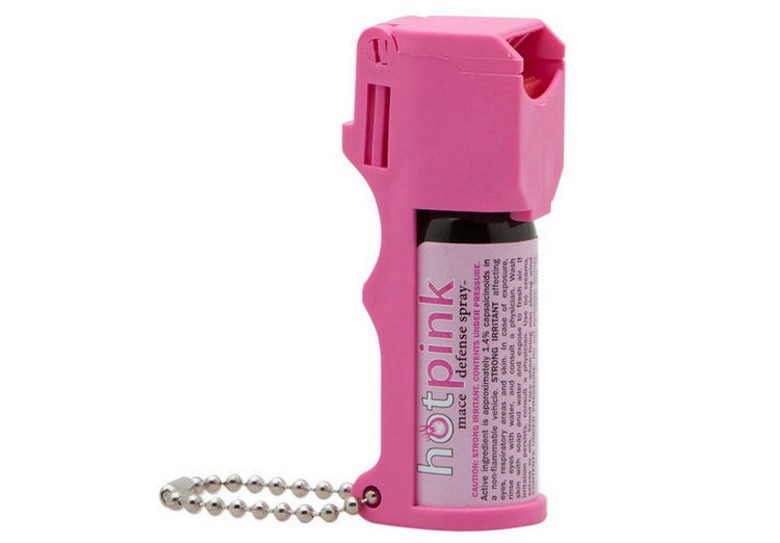
Same story as tear gas. Technically, pepper spray is an aerosol chemical weapon that disrupts breathing, which is outlawed by the Hague Convention.
Plastic Landmines
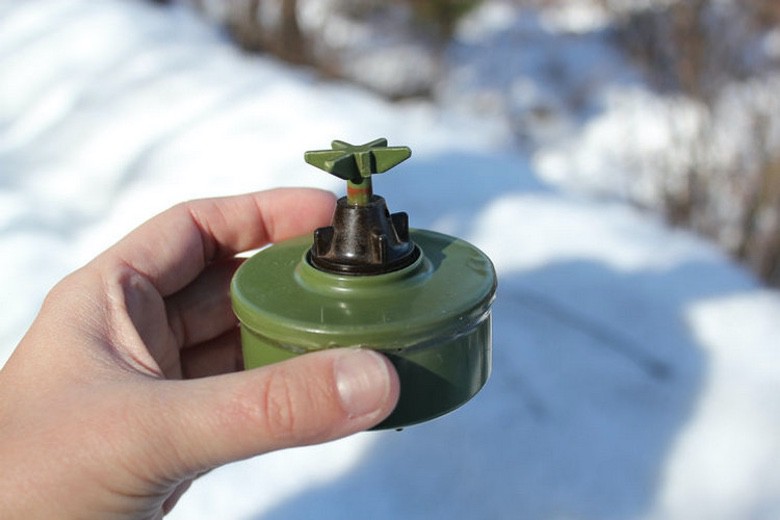
According to Protocol I of the 1979 Convention on Certain Conventional Weapons, weapons that use non-metallic fragments not detectable by X-Ray are prohibited in war. The rationale is pretty obvious, since field surgeons can’t remove fragments they can’t locate within an injured body. This doesn’t prohibit the use of plastic and undetectable materials in weapon design, it just means that weapons can’t be designed to use undetectable fragments as a primary damage device.
Spike Pits
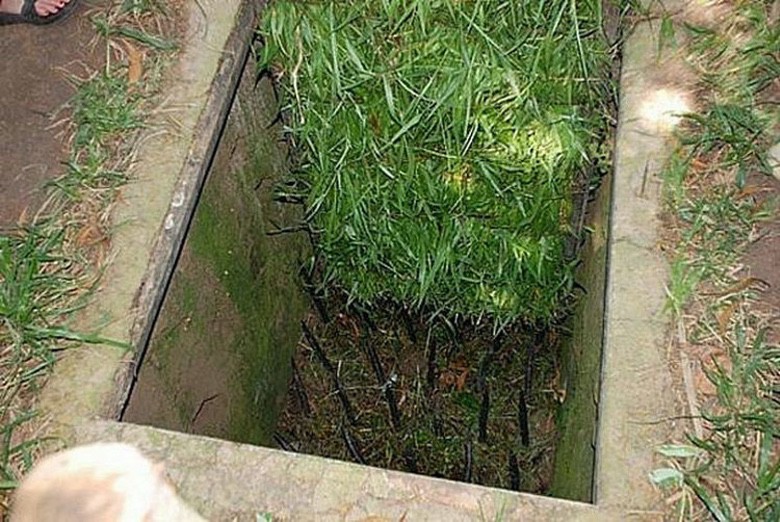
These old fashioned death traps are technically prohibited or regulated by Protocol II of the 1979 Convention on Certain Conventional Weapons. Pits with sharpened bamboo spikes maimed thousands of soldiers in Vietnam and in the Pacific during WWII. Adding insult to injury, the Vietcong and Japanese would routinely roll those spikes in human or animal feces first, causing secondary infections after even the smallest scratch. That, in itself, is a direct violation of the 1907 Hague convention on biological weapons and might even violate the 1675 Strasbourg Agreement.
Bio-Weapons
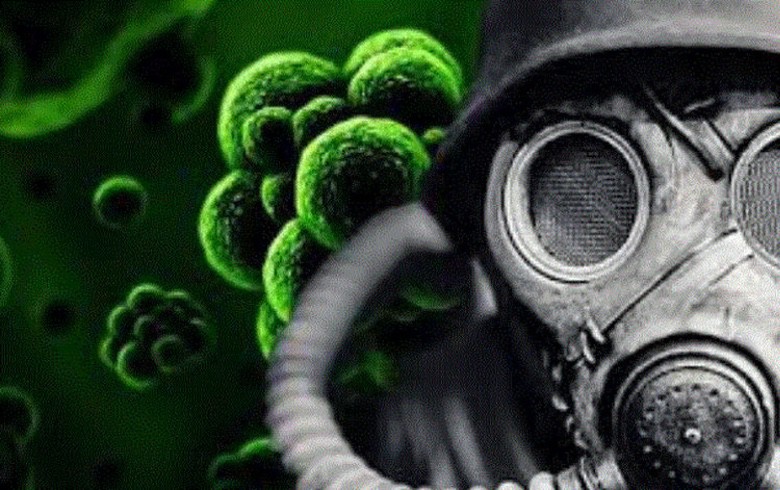
Believe it or not, bio-weapons are some of the oldest terror weapons known to man. They date back to at least the days of the Mongols, who would catapult rotting, infected bodies over castle walls in order to spread disease and sickness. It’s also been suggested that the Black Plague, spread by fleas on the back of rats, and originating from Asia, was the lingering result of a primitive bio-terrorism attack from centuries before.
Flamethrowers

According to Protocol III of the Convention on Certain Conventional Weapons, flamethrowers aren’t explicitly forbidden on the battlefield, provided the battlefield is nowhere near civilians. Mostly, this protocol refers to incendiary devices in and around civilian areas. It doesn’t necessarily prohibit the use of flamethrowers in, say, an open tank battle or clearing caves in Afghanistan. But most guerrilla fighters hide behind or within civilian areas. If they’re using human shields or might have captives flamethrowers are a no-go.
Napalm

You might love the smell of napalm in the morning, but the same Protocol III (passed after Vietnam) that restricts the use of flamethrowers also limits the use of napalm. It can’t be used anywhere near civilian targets, nor can it be used to burn down forests unless the trees are being used to conceal military combatants or vehicles. So, napalm isn’t banned, exactly, but more often than not, it can’t be used on today’s battlefields.
Blinding Laser Beams
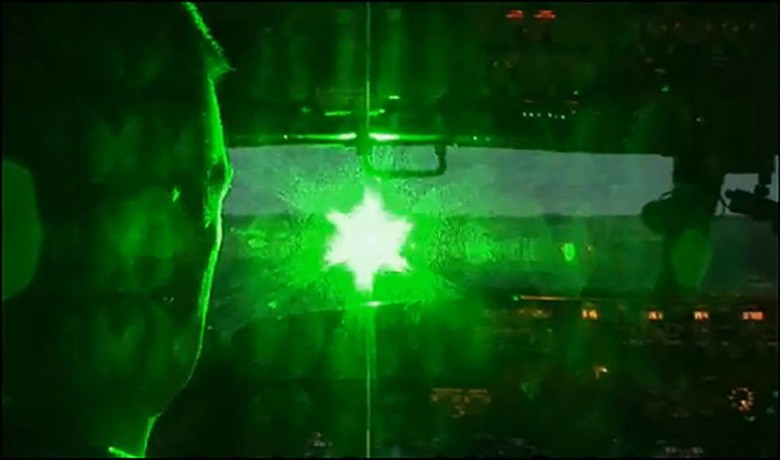
This might sound like one of those sci-fi things that would never happen, but the technology’s been around for 40 years. “Blinding” laser beams don’t refer to the laser “dazzlers” that police and special ops teams use; those are low-powered beams that aren’t designed to cause permanent blindness. This ban refers to lasers powerful enough to cause permanent blindness, which is amazingly easy to do, as most juvenile delinquents with laser pointers have been warned. The prohibition against deliberately blinding weapons goes way back to some of the first weapons bans passed in the 19th century.
Microwave Lasers (Limitation)
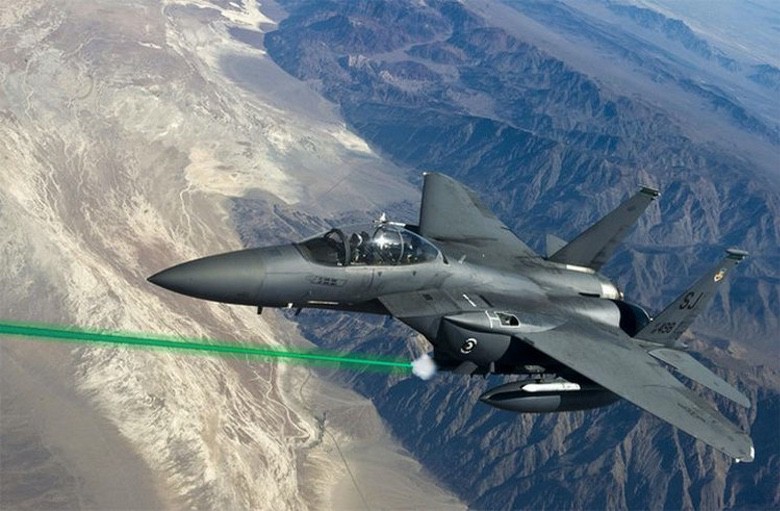
Yes, laser cannons are a real thing, and they’ve been around for quite some time now. Today, the Air Force uses massively powerful laser cannons mounted to aircraft and battleships, which can use them to shoot down incoming missiles from up to 250 miles away. Hypothetically, they could be mounted to tanks and used to incinerate human targets on the ground – but such use of directed energy weapons is currently forbidden, in large part because too low a dose from too great a distance might not kill the target so much as cook their eyes, which would be a violation on the ban against blinding lasers.
Phasers (Set on Kill)
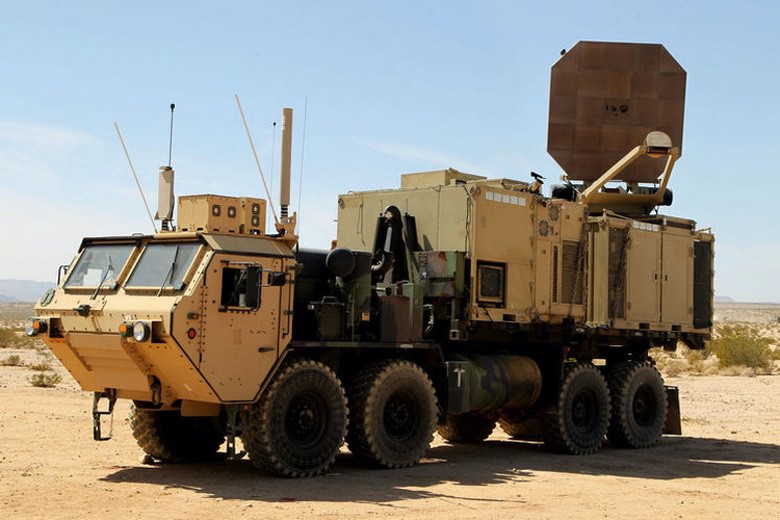
There are all kinds of directed energy weapons on the table, from “death ray” lasers to sonic cannons to real life plasma rifles. However, as of right now, directed energy weapons with enough power to kill human targets are forbidden in war. This doesn’t apply to de-powered non-lethal microwave emitters like the Active Denial System currently in use. ADS puts out enough energy to cause an intense sensation of heat on a large crowd, but it’s not enough to cause actual burning. The sensation has been compared to standing a few feet away from a large oven with the door open. It is possible to set the ADS on “kill,” but that is illegal for the time being.
Non-Self-Destructing Landmines

Since the Vietnam war, decades-old unexploded landmines have been a deadly menace in Southeast Asia. Cambodia has one of the highest rates of amputees in the world, as some 40,000 in its population have stepped on land mines planted during the Cambodian Civil War in 1970. In 2013 alone, some 111 people were killed by land mines buried more than 40 years before. For that reason, as of 1980, mines placed outside of fenced and cordoned areas must use some sort of self de-arming device or self-destruct mechanism set to go off after a certain period of time. Standard land mines may still be used, but can only be employed inside of fenced-in areas, away from civilian populations, and must be removed or destroyed when the conflict ends.
Poisoned Bullets
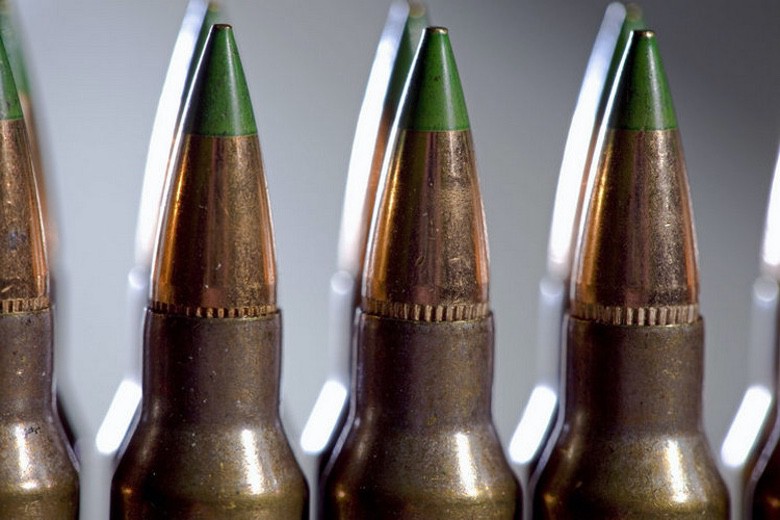
The world’s oldest known arms agreement, the Strasbourg Agreement of 1675, explicitly outlawed the use of poisoned bullets. The first guns used in warfare weren’t terribly accurate, so soldiers would often supplement the lack of accuracy by soaking their bullets in some kind of poisonous or infectious substance. It was not unheard of for legions of soldiers to stow their bullet caches inside rotting corpses, though the bottom of a latrine pit worked just as well. When France and the Holy Roman Empire went to war, they initially experienced a massive wave of casualties not from gunshot wounds, but from subsequent infection. More than 250 years would pass before Geneva once again addressed chemical and biological weapons.
Hollow-Point Bullets
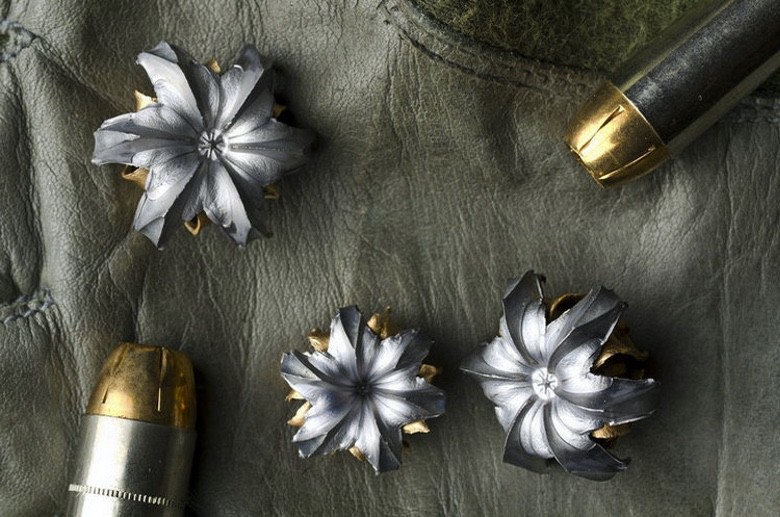
Hollow-point bullets (aka “expanding ordinance”) were explicitly outlawed for use in international warfare by the Hague Convention of 1899, which was, in fact, only a continuation of the St. Petersburg Declaration of 1868. This declaration forbade the use of exploding or expanding projectiles of less than 400 grams, which drew a clear line between “bullets” and “artillery shells.” The concept behind the ban was to avoid using bullets that “made death inevitable.” Which, some might say, is the whole point of shooting someone in the first place.
Balloon Bombs

Yes, you’re reading that correctly – according to the 1898 Hague Convention, it is against international law to drop bombs from balloons. Originally proposed in 1898, the prohibition against the “the discharge of any kind of projectile or explosive from balloons or by similar means” went into effect at the 1907 Peace Conference as a probationary measure to be resolved during the third conference.
However, the third Hague peace conference never met, because of a slight case of world war. Japan famously sent scores of balloon bombs to the American Pacific Coast during WWII, with the purpose of causing forest fires. While most landed harmlessly, one did cause casualties – a balloon that landed in a forest near Bly, Oregon, that exploded and killed a Sunday school teacher and five children. The practice of shooting a rifle or dropping a bomb from a balloon is still technically forbidden to this day.
Dirty Bombs
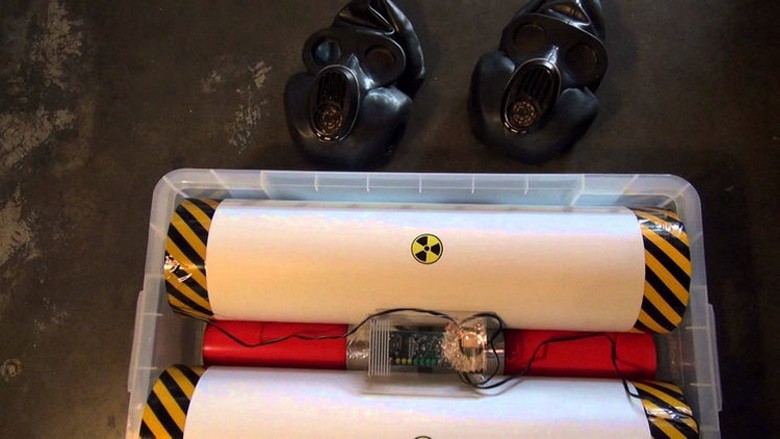
Bombs laced with radioactive material are forbidden under international law, though most countries wouldn’t bother with them anyway. The point of a dirty bomb is to irradiate an area and make it uninhabitable — which means that the “winner” of the war can’t go there either. That aside, the amount of radioactive material necessary to make a dirty bomb effective could just as easily be used to build a full-on nuclear bomb.
Salted Bombs
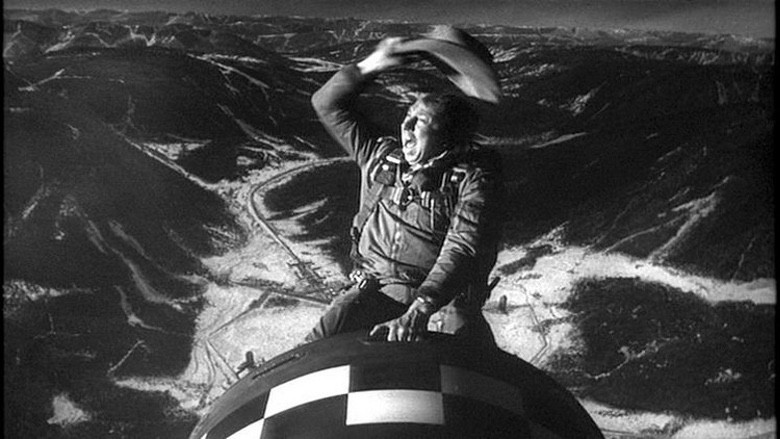
Salted bombs are very similar in concept to dirty bombs, but are true nuclear weapons created specifically for the purpose of shorter-term area denial. A “salted” nuke contains an isotope of another substance like cobalt, gold, zinc, or sodium. During a nuclear blast, these elements become a huge cloud of fallout. These types of weapons are the same type used in the Soviet “Doomsday Device” from Dr. Strangelove. Small, one kiloton salted nukes could be used tactically and made so that the radioactive fallout decayed in a year or two, thus denying large swaths of land to enemy forces for a time. But radiation is invisible, and these weapons are generally prohibited because of their potential lethality to civilians.
Locusts, Fleas, and Rats

Don’t laugh too hard – it’s been done, and to sometimes devastating effect. The Black Plague is theorized by some to be the result of a lingering bio-terror attack from Asia. Today, using hordes or plagues of animals carrying disease in war would be completely illegal.
Bat Bombs

In the second world war, Americans experimented with a secret weapon designed to decimate Japanese cities. At the time, most of Japan’s cities were made of wood and paper. The idea was to release a bomb filled with sleeping bats (captured from caves in New Mexico), wearing collars containing a napalm-like incendiary. Upon release at dawn, the bats would disperse and roost under the eaves of Japanese homes up to 40 miles away. The project, code-named “X-Ray,” was tested in 1944, but the war effectively ended with the bombing of Hiroshima and Nagasaki.
It might sound funny today, but testing showed these unusual weapons to be tremendously effective…some say even more so than the A-Bomb. Today, bat bombs would certainly be prohibited under Protocol III of the Convention on Certain Conventional Weapons.
Unexploded Bombs
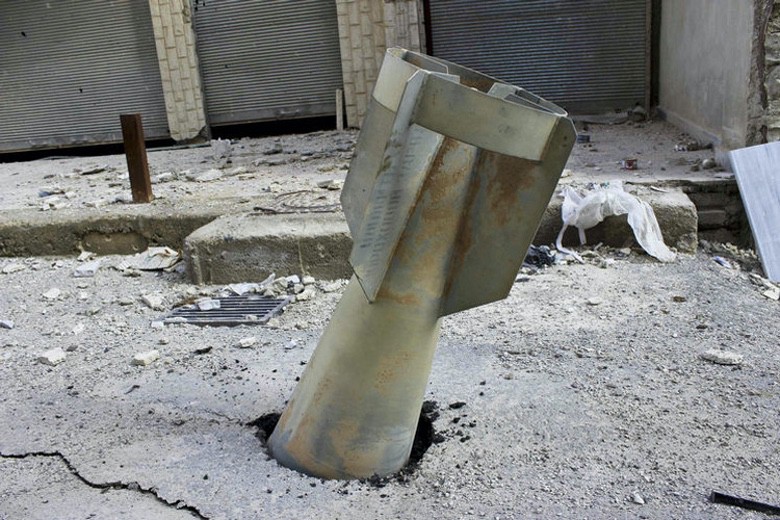
Protocol V of the Convention on Certain Conventional Weapons prohibits the use of “explosive remnants of war,” such as unexploded bombs and artillery shells. This protocol came about in the 1990s, when the newest crop of Middle Eastern jihadis began assembling roadside bombs from unexploded Soviet ordinance from the Afghanistan conflict. IEDs are remain a source of terror in that part of the world.
Smallpox Blankets

While America in general has avoided the use of biological and chemical weapons, many historians agree that we did make at least one attempt at genocide through bio-weaponry. America’s “manifest destiny” meant getting rid of the original inhabitants of the continent. Many were killed by bullets and blades, but far more were wiped out as a result of diseases introduced by Europeans. Coming from a center of worldwide trade, Europeans developed at least partial immunity to many diseases, while themselves remaining carriers. Where Europeans went, plague almost always followed, helping to exterminate native populations and assisting in conquest.
While such bio-terrorism was often unintentional, history has recorded a few instances where it was deliberately used as a weapon of war. Especially after we started to understand the nature of germs and disease. This quote from Commander Jeffrey Amherst (1717 to 1797) pretty much sums it up: “You will do well to try to inoculate the Indians, by means of blankets, as well as to try every other method that can serve to extirpate this execrable race.”

